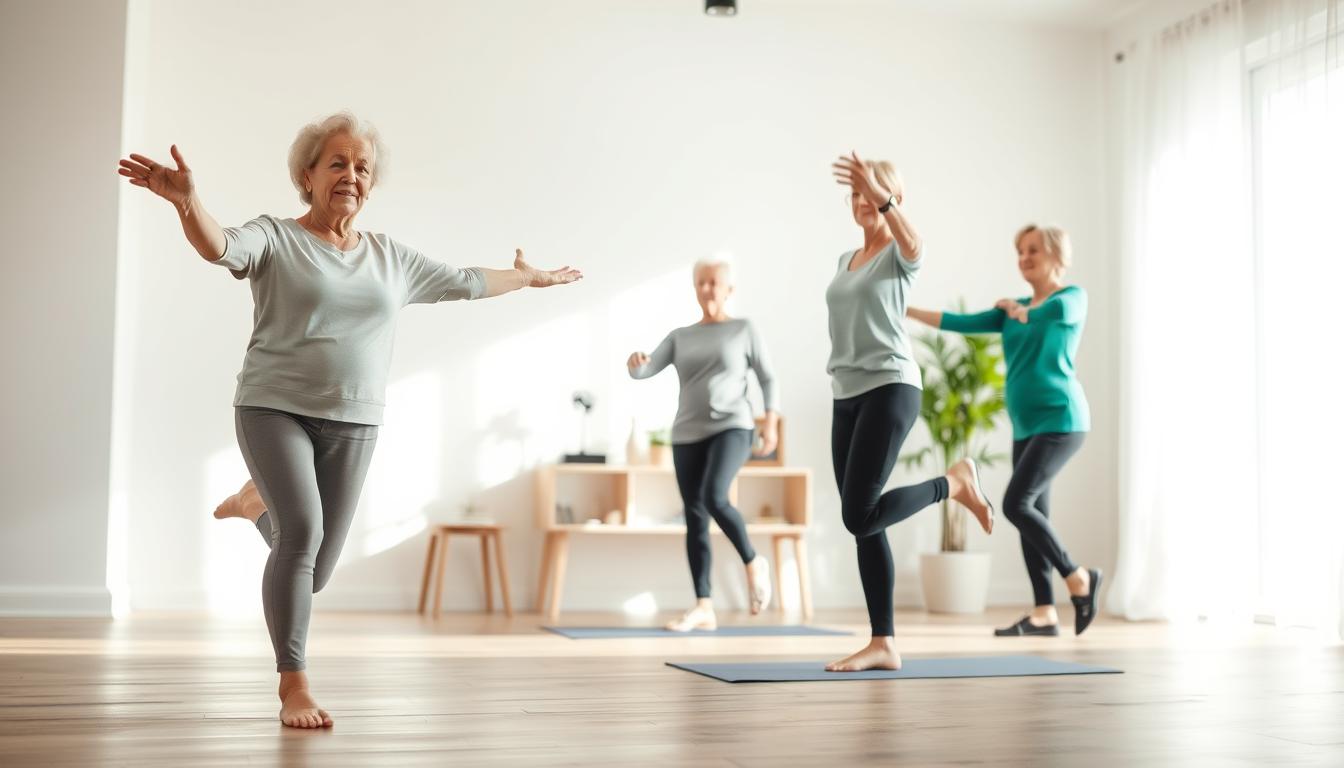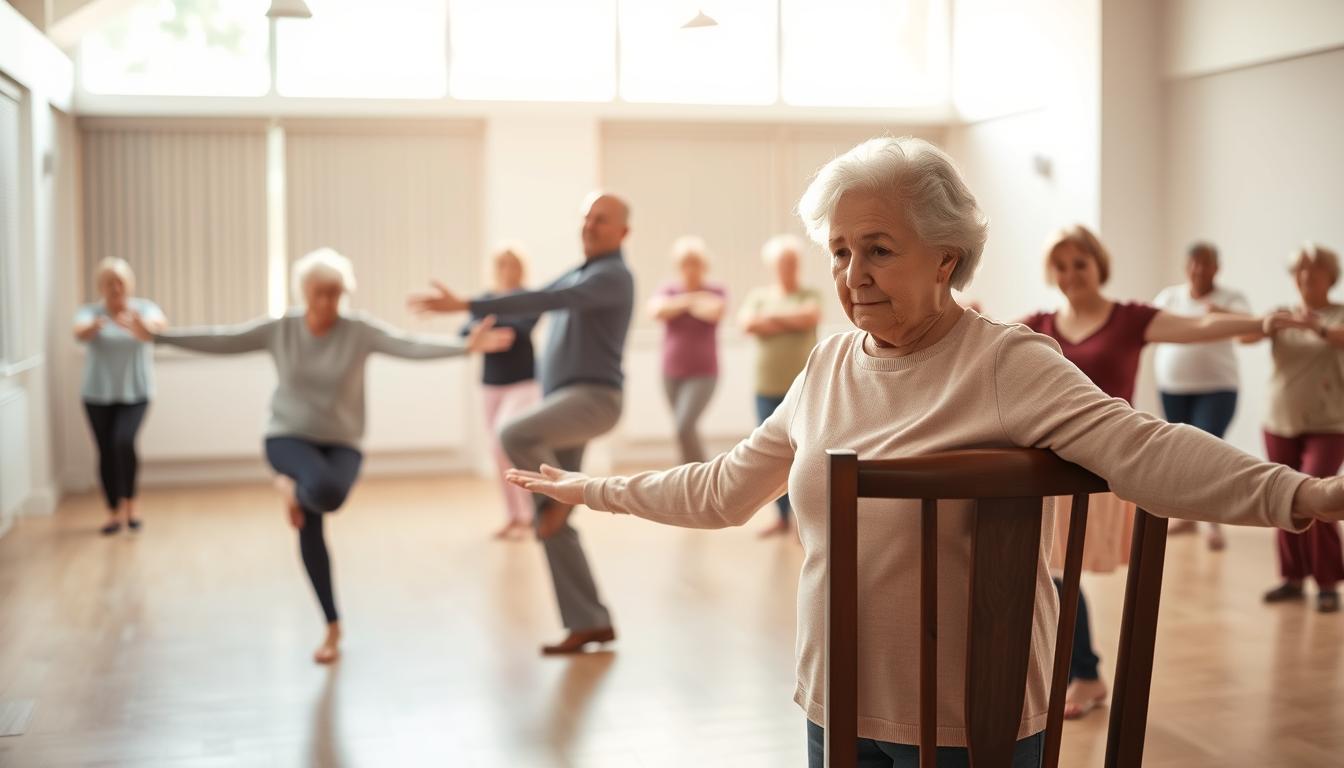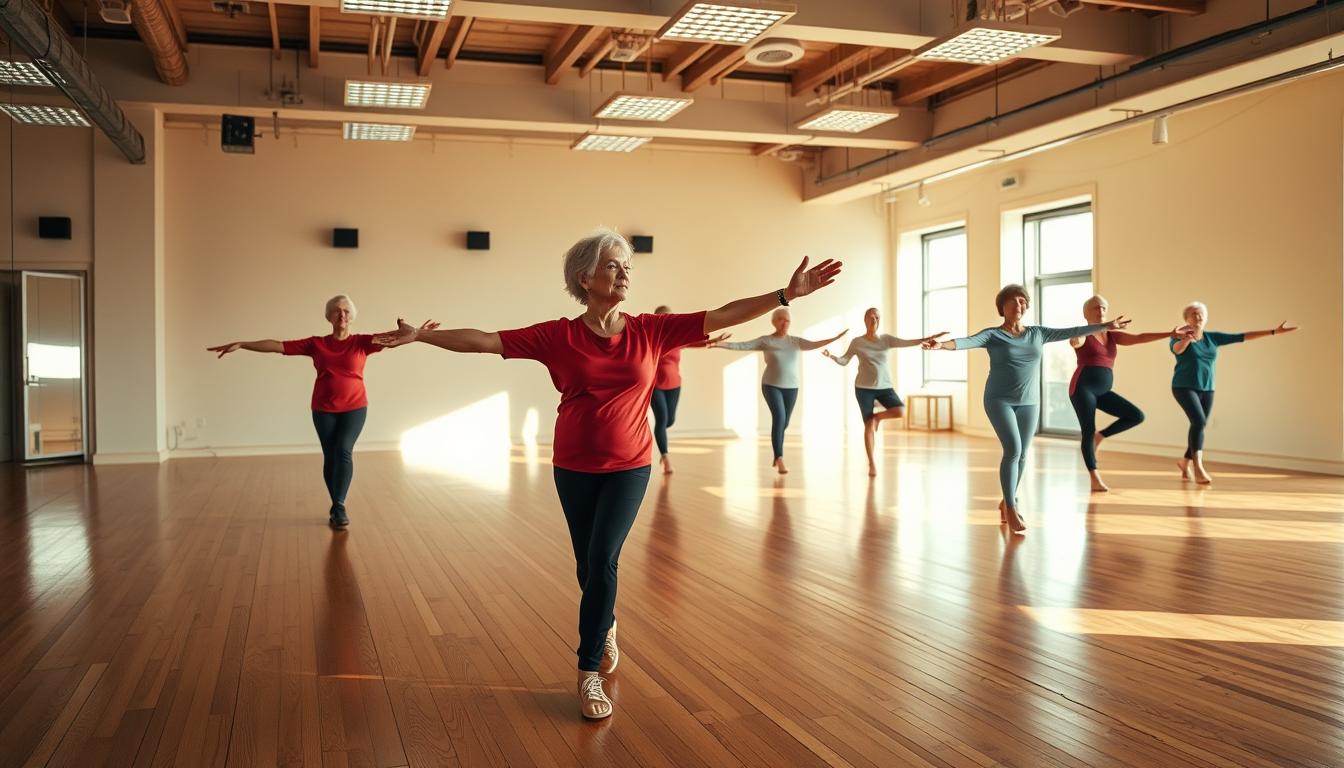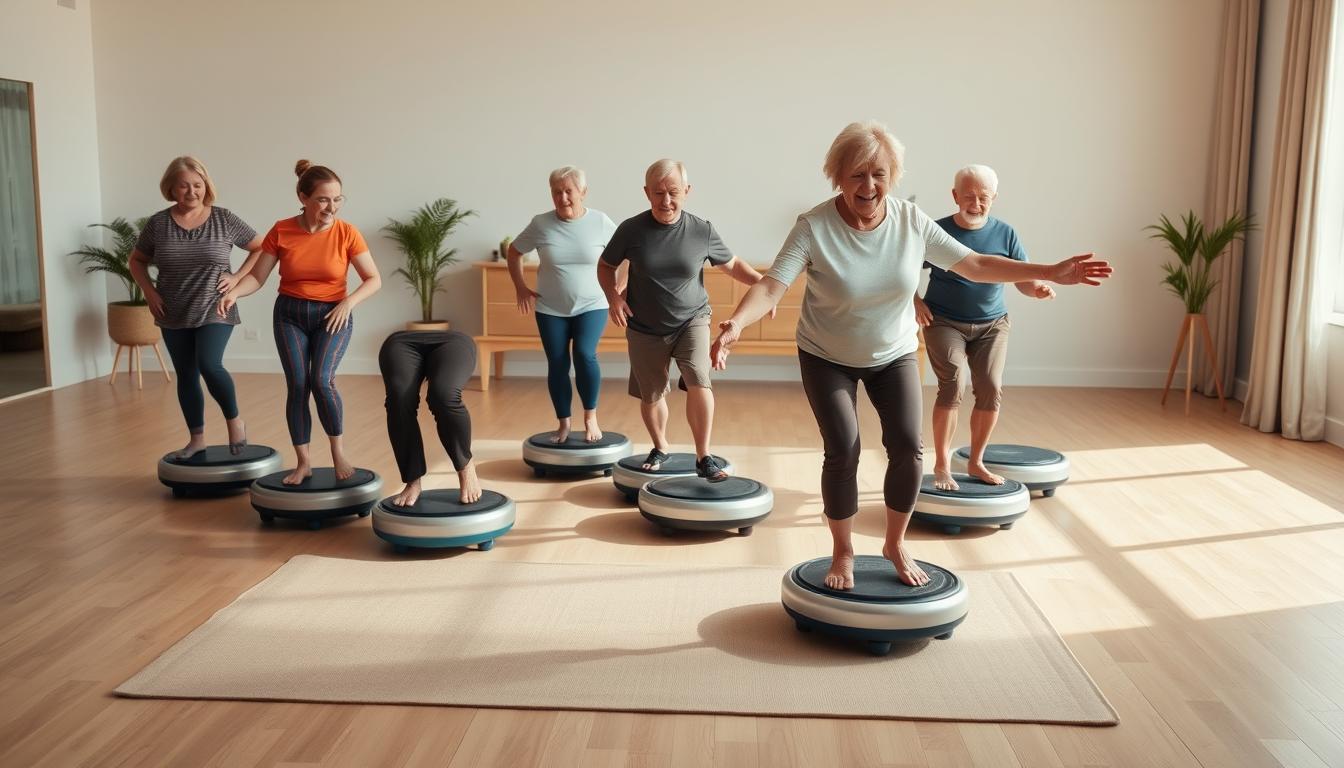Every second, an older American takes a tumble—but you don’t have to be next. Believe it or not, staying steady boils down to training your feet like they’re GPS units, recalibrating with simple moves you can do between commercial breaks. No equipment? No problem. I’ve tested these routines while waiting for my tea kettle to whistle.
The CDC’s grim statistic isn’t just a number—it’s a wake-up call. Think about it: Your legs are the ultimate bodyguards against gravity’s sneak attacks. One minute you’re reaching for a cereal box, the next… well, let’s not go there. That’s why we’re focusing on practical stability—like shifting weight between feet like you’re dodging sidewalk cracks or holding a chair-assisted pose that’ll make your grandkids jealous.
Here’s the kicker: These aren’t gym-class drills. Try standing on one leg while brushing your teeth (hello, multitasking!) or pretending you’re walking a tightrope between couch cushions. I’ve seen 70-year-olds out-penguin-waddle their grandkids after two weeks of this stuff. And guess what? You’ll sneak in strength training without realizing it—like ninja fitness for your golden years.
Stick around for the full list. We’re talking footwork sharper than a line dance, positions that’ll make your ankles bulletproof, and reactions faster than your cat stealing chicken off the counter. Your future self—still vertical and thriving—will thank you.
Understanding Why Balance Matters for Older Adults
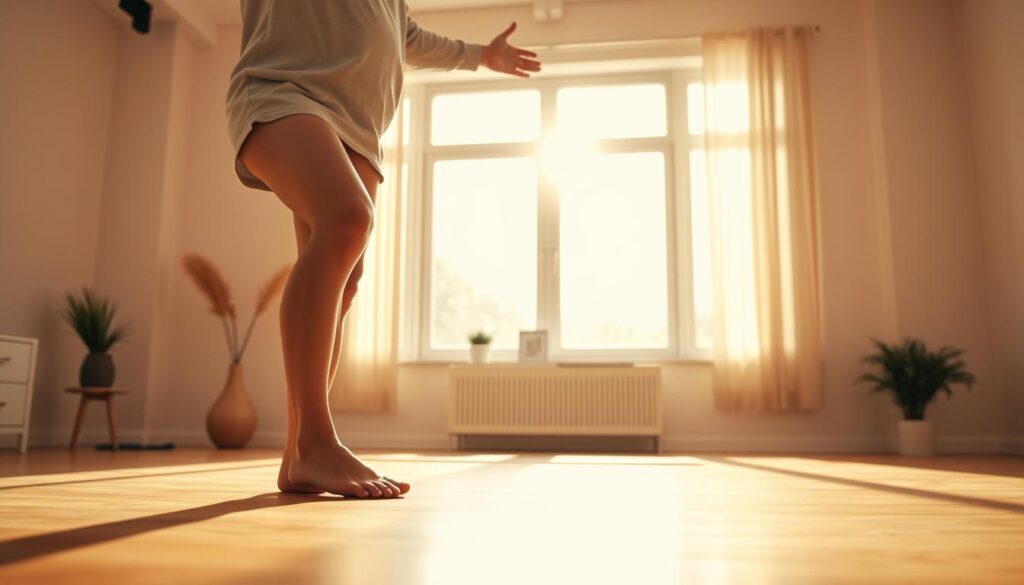
Your inner ear isn’t just for hearing whispers—it’s the unsung hero keeping you vertical. Dr. Barbara Bergin puts it bluntly: “Your body’s GPS gets fuzzy after 60.” Muscle mass shrinks faster than a cheap t-shirt, while nerve signals slow like dial-up internet. Honestly speaking, it’s not just about creaky joints—your feet’s “feelers” become less sensitive than a teenager’s empathy.
Your Body’s Silent Rebellion
Caroline DeGroot calls it “the great sensory fade-out.” Three systems team up for balance—vision, inner ear fluids, and foot nerves. When one flakes out? You’re suddenly doing the sidewalk shuffle. High blood pressure doesn’t help—it’s like trying to stand straight on a cruise ship during a storm.
Here’s the skinny: Adults lose 3-8% muscle per decade after 30. Your left foot might hesitate half a second longer to react. That’s all it takes. I’ve seen folks grab a chair mid-stumble more times than I’ve burned toast.
When Life Comes at You Fast
Picture this: You’re reaching for the oatmeal, socks sliding on tile. CDC stats say 3 million seniors hit ERs yearly from falls like that. One client told me her hip fracture happened “faster than Amazon Prime delivery.”
But here’s the kicker—targeted moves can rewire this mess. Think of exercises as software updates for your legs. Hold a wall for support during heel lifts, and suddenly you’re building strength where it counts. As Bergin says: “It’s not about avoiding falls—it’s about bouncing back when gravity wins.”
Top 10 Balance Exercises for Seniors at Home

Let’s cut to the chase—these four moves are your new secret weapons. Think of them as GPS recalibration for your feet. No fancy gear required, just your determination and maybe a kitchen chair.
Rock the Boat & Flamingo Stand
- Rock the Boat: Stand with feet hip-width. Shift weight to your left foot, lifting the right heel for 5 seconds. Switch sides. Aim for 8 reps per leg. Pro tip: Pretend you’re swaying with ocean waves—smooth, not jerky.
- Flamingo Stand: Hold a chair back with one hand. Lift your right knee until your thigh is parallel to the floor. Hold 10-30 seconds. If you wobble, laugh it off—even flamingos stumble sometimes.
Chair Squats & Heel-to-Toe Walk
- Chair Squats: Sit halfway down, hovering 2 inches above the seat. Keep your chest up like you’re balancing a book. Do 5-8 reps. Mike Kutcher swears by this for building “chair-to-stair confidence.”
- Heel-to-Toe Walk: Place your right heel directly in front of your left toes. Take 10 steps forward. Toes forward, eyes ahead—you’re now a tightrope walker without the circus fees.
| Move | Focus Area | Duration |
|---|---|---|
| Rock the Boat | Weight shifting | 5 sec/side |
| Flamingo Stand | Single-leg stability | 10-30 sec |
| Chair Squats | Lower body strength | 5-8 reps |
| Heel-to-Toe | Precision walking | 10 steps |
Consistency beats perfection here. Do these 3 times weekly while your coffee brews. Before you know it, you’ll be pivoting like a pro during grandkid tag games.
Step-by-Step Guide to Daily Balance Routines
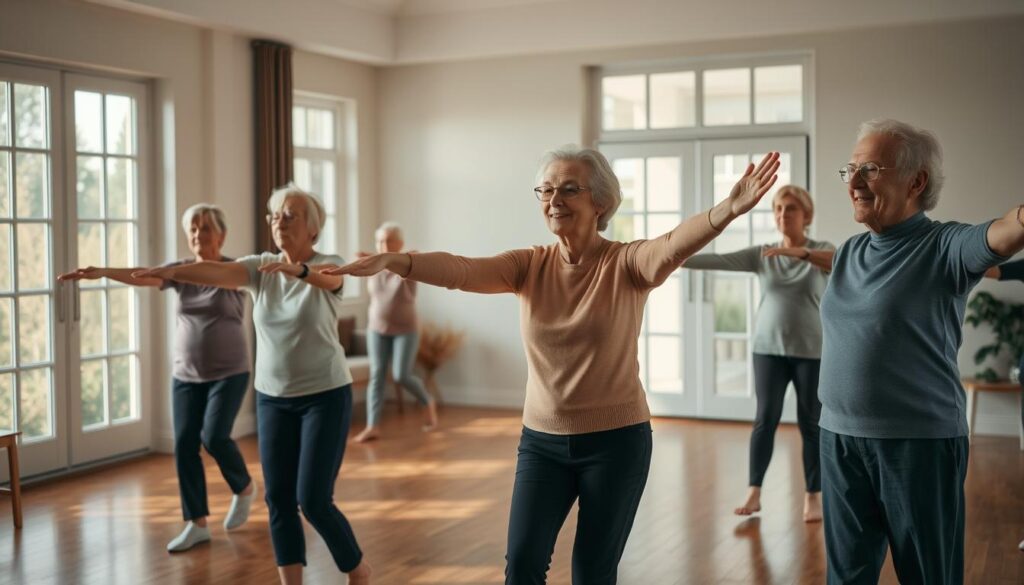
Your morning coffee isn’t the only thing needing a warm-up—your muscles do too. No kidding, five minutes of prep turns stiff joints into nimble tools. I’ve seen folks skip this step and wobble like bowling pins. Let’s fix that.
Effective Warm-Up Strategies to Activate Muscles
Start with marching in place for 2 minutes—like you’re stomping grapes into imaginary wine. Keep your knees high enough to feel your hips wake up. Pro tip: Swing your arms like you’re hailing a taxi. This isn’t rocket science, just pure muscle activation.
Next, ankle circles: Lift your right foot slightly off the floor. Rotate your toes clockwise 10 times, then switch. Feels silly? Maybe. But believe it or not, this primes your “foot feelers” for better stability. Finish with shoulder rolls—imagine drawing circles with your elbows while standing tall.
| Exercise | Purpose | Duration |
|---|---|---|
| Marching | Blood flow & coordination | 2 minutes |
| Ankle Circles | Joint mobility | 20 sec/foot |
| Arm Swings | Upper body engagement | 1 minute |
| Knee Lifts | Core activation | 10 reps/side |
Short, Focused Sessions to Fit Busy Lives
Three 10-minute sessions weekly beat one marathon workout. Here’s why: Your body craves consistency, not heroics. Try heel-to-toe walks during TV ads—5 steps forward, 5 back. Hold a chair if needed, but aim to let go like a toddler ditching training wheels.
For single-leg stands, lift your left foot an inch off the floor. Hold 10 seconds while brushing your teeth. Switch sides tomorrow. These micro-sessions build strength without eating into crossword time. Remember: Every second counts, even if you wobble like a bobblehead at first.
Wrap up with controlled knee bends—lower halfway into a chair, then rise slowly. Do 5 reps while humming your favorite Sinatra tune. Before you know it, you’ll pivot smoother than a revolving door at a fancy hotel.
Safety Tips and Modifications for At-Home Exercises
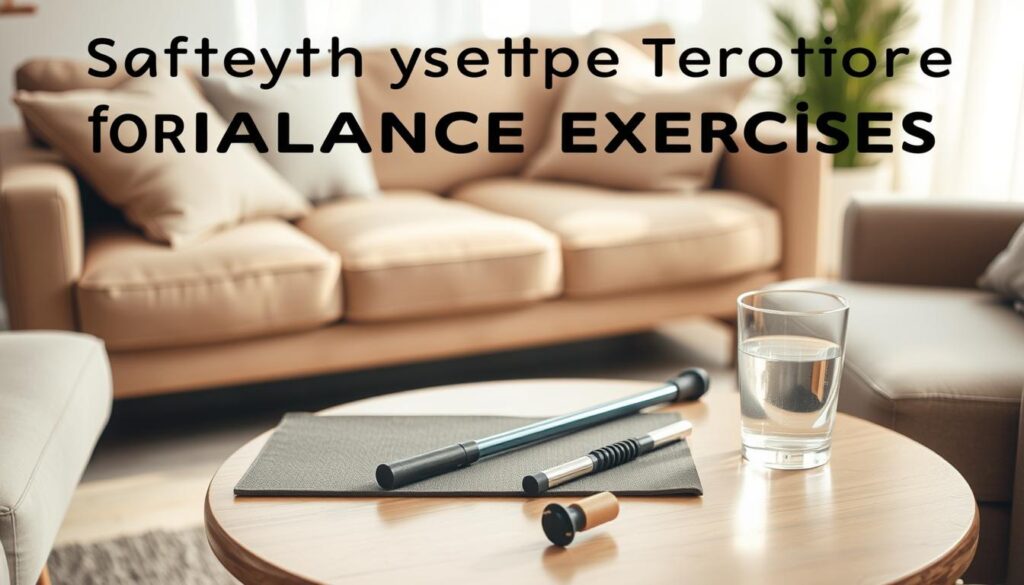
Think of safety as your workout’s invisible training partner—always there, never stealing the spotlight. I’ve seen too many sprained ankles from rushed movements. Let’s make your living room the safest gym in town.
Utilizing a Chair or Wall for Extra Support
Grab that kitchen chair like it’s your dance partner. Mike Kutcher calls chairs “the ultimate balance sidekicks.” Here’s why: When doing single-leg stands, keep two fingers on the backrest. Not white-knuckling—just light contact. If you wobble, your chair becomes an instant safety net.
| Exercise | Modification | Pro Tip |
|---|---|---|
| Heel-to-Toe Walk | Use wall for hand support | Keep elbows slightly bent |
| Flamingo Stand | Place chair in front | Lower foot slowly if shaky |
| Chair Squats | Add cushion for depth control | Exhale when standing up |
| Weight Shifts | Touch countertop lightly | Shift like melting ice |
Reduce repetitions if your knees protest. Five perfect reps beat fifteen sloppy ones. And hey—if lifting your left foot feels shaky today? Lower it halfway. Progress isn’t linear, folks.
When and How to Seek a Doctor’s Advice
Sharp pain during heel lifts? Dizziness when turning your head? That’s your body flashing hazard lights. The CDC insists on medical clearance for anyone with past fractures or vertigo. Honestly, it works wonders—my client Ruth discovered her balance issues stemmed from an ear infection.
Here’s your action plan: Stop immediately if something feels “off.” Note when it happens (“left hip pinches during side steps”). Then call your doc with specifics. They’ll likely suggest seated versions or targeted physical therapy. Remember—modifying isn’t failing. It’s smart training.
Integrating Balance Training with Overall Strength
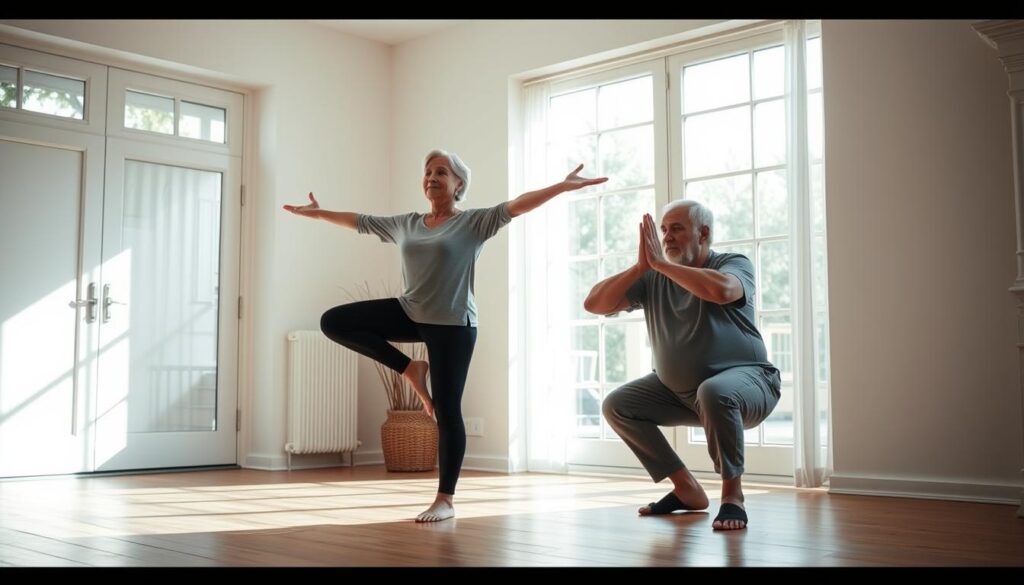
Your favorite soup recipe needs salt and pepper—same goes for fitness. Mixing strength moves with balance work creates a powerhouse combo. Think of it like brushing your teeth while standing on one foot: double the benefit in half the time.
Smart Pairings for Real Results
Try this while waiting for the microwave: Hold a soup can in each hand. Lift your right knee to hip height. Curl the “weights” toward your shoulders. You’re now building arm strength and testing single-leg stability. Cha-ching!
Use your trusty kitchen chair for support during calf raises. As you push up onto your toes, extend both arms overhead like you’re reaching for the cookie jar. This simple tweak engages your core while strengthening ankles.
| Combo Move | Strength Focus | Balance Element |
|---|---|---|
| Bicep Curl + Knee Lift | Arm muscles | Single-leg hold |
| Overhead Press + Heel Raise | Shoulders | Ankle stability |
| Wall Push-Up + Foot Tap | Chest | Weight shifting |
Start with 2-pound cans or water bottles. Too easy? Add 30-second holds between sets. Your body will learn to stabilize under load—like carrying groceries while navigating porch steps.
Remember Grandma’s advice about slow cooking? Apply it here. Increase resistance gradually—maybe move from cans to actual weights after two weeks. Track progress in a notebook: “March 12: Did 8 reps without wobbling!”
These fusion moves rewire your brain-body connection faster than separate workouts. Before long, you’ll pivot to catch falling remotes like a ninja—all while keeping those muscles toned and ready.
Wrapping Up Your Balance Routine for Better Living
Progress, not perfection—that’s the golden rule I’ve seen transform lives. Those daily heel-to-toe walks and chair squats? They’re not just moves. They’re your ticket to grabbing grandkids’ hands without hesitation or reaching for top-shelf spices like it’s no big deal.
Here’s the truth: Consistency beats intensity every time. Five seconds of single-leg stands while microwaving leftovers counts. Three repetitions of weight shifts during phone calls matters. Your feet are rewriting their GPS code with every tiny effort.
Keep that kitchen chair close—not as a crutch, but as a trusty sidekick. If your knee protests during side steps, lower the lift. Saw a client turn wobbly toes into rock-solid stability by simply practicing near a wall while waiting for coffee.
And hey—if something feels off? Doctor visits aren’t defeat. They’re smart strategy sessions. One fall prevented could mean years of backyard gardening or spontaneous dance breaks with old vinyl records.
You’ve got this. Start small. Celebrate micro-wins. Those hips and lower back will thank you when you’re bending to pet the dog without groaning. Now—what’s your next move toward…
